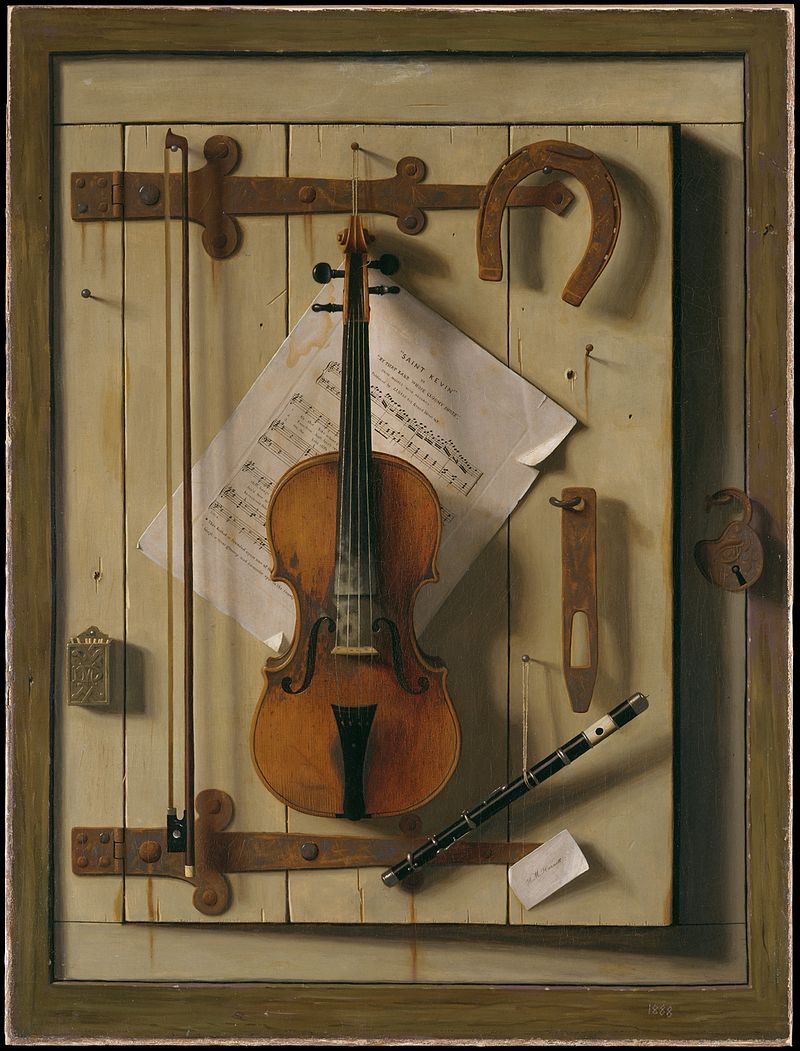The roots of American still life is in Europe. It is assumed that colonists, travelers, visiting painters could bring original Dutch, Italian, Spanish paintings, including still lifes, to American ground. Studying the European experience, relying on it, as in the portrait, the artists as a result invested their original content, attitude, accumulated painting experience. Nowadays the antique painting prices on American still life art are consistently high, but the way to the top was not fast and easy.
The important type of still life, originating from the Anglo-Dutch tradition (found by Samuel Dirksz van Hoogstraten, Wallerant Vaillant, Cornelis Norbertus Gijsbrechts, Evert Collier, Jean Klopper), is a “quodlibet” (from Lat. – anything) – a type of vertically-frontal still life reproducing a board or drawing tablet with objects or papers attached to it (wall-rack still life). Up to the middle of the 18th century it was widely distributed in Europe and gained exceptional popularity among Americans, especially in the last quarter of the 19th century in the works of William Harnett, Frederic Edwin Church, John Peto, et al. Art connoisseurs and antique art dealers continued to buy vintage paintings of this this school.

William Michael Harnett. Still life Violin and Music. 1888. Source: Wikipedia
The earliest surviving still life of this kind belongs to an artist from Philadelphia, a member of the Columbianum Association, Samuel Lewis. His artworks are quite rare and rated high among dealers that buy antiques.
It is called "A Deception" (c. 1780) was painted in London. The evening newspaper, invitations and theater tickets, playing cards, business cards, including in the center – the artist himself, open on the first page of the book – a woman's novel and the tragedy of the one Mr. Philips "Inconsolable Mother", letters, an engraving with a landscape – all this in apparent randomness, but in fact thoughtful and balanced, it is placed on a board or a board wall and is fastened by red leather or fabric strips, forming a diamond-shaped pattern. The artist demonstrates mastery in reproducing various types of typesetting and handwriting, which was one of the main sources of his income, - he always represented himself as a "master of drawing and writing". Bright spots and muted shades of red and blue, yellowish and white on a black background create a major-sounding coloristic chord.
.jpg)
Samuel Lewis, A Deception, c. 1780. Source: Commons Wikimedia
Another surviving experience of Lewis in this genre is called "Deception. (Theater tickets)" (Ca. 1802-1805) was conceived as a witty hoax and, one might say, the first installation in the museum space. In 1808 Lewis presented the Peale Museum with two artworks called "Originals" and "Imitations" – the first contained various real cards, bills, tickets, letters and other papers, the second – all the same was painted in watercolor and ink on paper. "Imitations", (also now known as "A Deception are an example of how naturally and inventively the artist invests new content in an old type of still life, giving it a modern sound.
The early American still life found a long-lasting tradition. Its potential possibilities of pictorial-expressive solutions received a new impetus and new interpretations in the work of the next generations of American artists.
Cover image: Samuel Lewis. A deception Ca. 1802-1805. Source: Masterart


